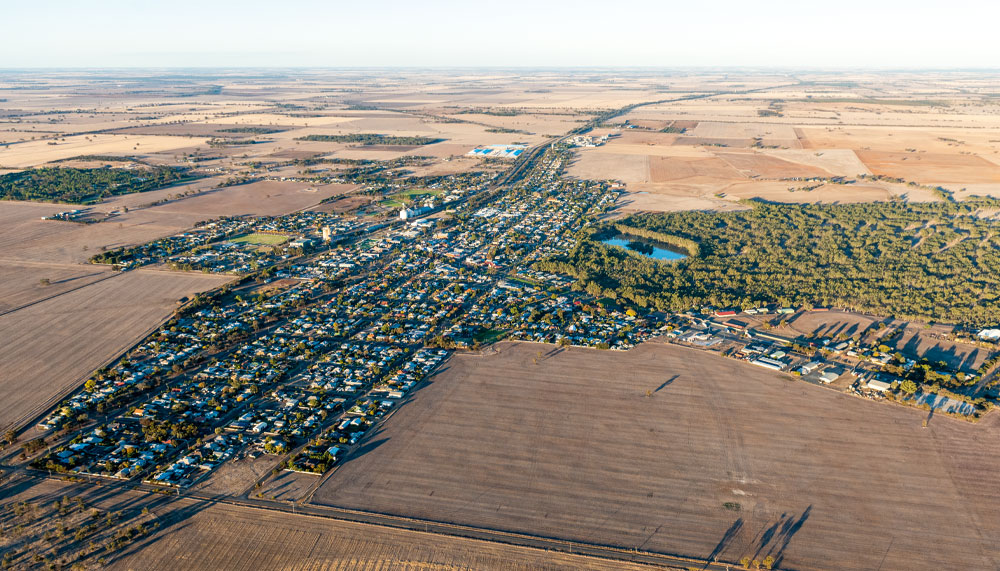A deep dive into recently released statistics from the latest nationwide census highlights the changes occurring in rural and regional Australia.
Story Amanda Burdon Photo Andrew Bertuliet
A ‘perfect storm’ has made it possible for many people to head to the bush in recent years. Technological advances and workplace trends already underway before COVID have accelerated. Cost-of-living pressures and widespread labour shortages have also triggered greater mobility.
Those who leave the bush as youngsters to pursue education and launch their careers in the city have commonly returned to put down roots in familiar soil. But in recent years that movement back to rural and regional Australia has been much more pronounced. Between 2011 and 2016 only one-third of the 180,000 regional Australians aged 20–35 who had left the regions for capital cities boomeranged back. It was a very different story come 2021. For the first time since 1981, census data revealed that more people aged 25–44 had migrated from metropolitan centres to regional areas than vice versa. In the grip of the pandemic, fewer people also elected to leave rural and regional Australia.
“Regional Australia Institute (RAI) research tells us that one in 5 city dwellers want to make the move,” says RAI CEO Liz Ritchie. “People want more time, less congestion and more space; they want to be less stressed and reduce their debt. Regional centres are experiencing the biggest population growth, where there is slightly more infrastructure and education and health, and greater liveability.” However, the statistics also show that many smaller communities that don’t have that infrastructure are continuing to decline.
Independent economist Saul Eslake, in the Australian Financial Review, wrote that regional Australia is in its strongest position in decades. “The combination of the safety and space of the regions during the pandemic, plus the drought breaking (for now at least), and increasing prices for export food crops, led by meat and grains, has really changed the way Australians view the bush,” he wrote.
As COVID impacts subside, many demographers warn that the pendulum is likely to swing back. But the RAI remains upbeat. Each quarter it collaborates with the Commonwealth Bank to produce a Regional Movers Index that charts movements between Australia’s regions and capital cities. During the height of the pandemic, residents fled the capital cities for the regions in record numbers; some 15.4% more left than in the 2 previous years. But following a 5-year high in the March 2022 quarter, these numbers had fallen significantly by June.
“COVID has triggered more movement than we’ve ever seen, on the face of it, but it’s a very unique set of circumstances,” Liz says. “Still, the sheer number of people moving to the regions during the lockdowns, many of them millennials, but also gen alpha and gen Z, represents a step change in the overall size of many regional communities. Suddenly we have this mindset shift, and corporate Australia giving permission for people to work remotely. It has enabled them to make different choices, to live where they love instead of living where they work, and then you get the benefits of that.”
Census figures report modest population gains in many regions, and even net losses in internal migration. University of Melbourne principal research fellow Tom Wilson, for one, believes some of the population trends have been overstated. “It’s not massive and I’m not convinced it will continue,” he says. “I think the migration trends that existed pre-COVID are likely to return. There is a lot of geographical variation.”
What has accentuated the regional population gains are the population losses in our capitals, namely Melbourne and Sydney, primarily due to the freeze on overseas migration. Before our border closures in March 2020, Australia’s net overseas migration was up to 200,000 people a year. A year later that plummeted to 85,000. “The growth in regional Australia was higher than the capital cities in 20–21 in relative terms, but that’s because the cities were declining overall,” Tom says. “Regional Australia had less overseas migration, but more internal migration during that period.”
This story excerpt is from Issue #147
Outback Magazine: February/March 2023










